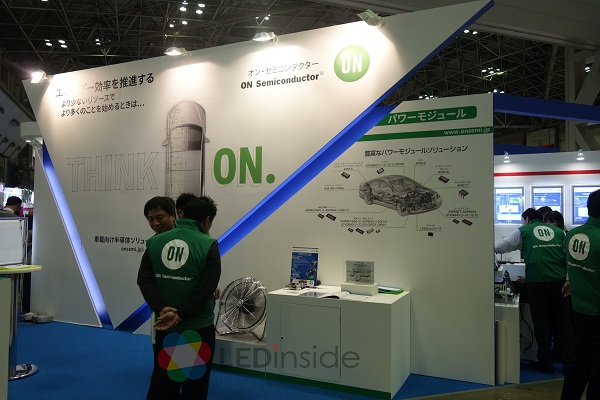The development of technologies, components, theories, and practical experience for autonomous driving will determine when fully autonomous vehicles become mainstream and how we introduce it to our everyday life. In particular, advanced driver assistance systems (ADAS) is one of the key technologies that helps monitor conditions of cars, capture surrounding situations, detect dangers and hazards and send warnings to make drivers stay alert before accidents happen. At NEPCON JAPAN 2018, exhibitors demonstrate their solutions for autonomous driving and ADAS.
 |
|
(Image: LEDinside) |
Valens
Valens, an Israeli designer and manufacturer of automotive chips, presents its HDBaseT solution at the exhibition. It is an in-vehicle technology featuring high performance, low latency and flexible architectures. This system enables in-vehicle connectivity of audio and/or visual content, Ethernet, USB, controller, and power supply with a single cable. In order to lower the energy consumption, the United States and some European countries have adopted camera monitor system (CMS) to replace the side view mirrors. In the future, the traditional side mirrors will be replaced by cameras presenting road conditions inside cars, where the HDBaseT technology can be applied.
 |
|
(Image: LEDinside) |
NAGASE
NAGASE showcases its 315 SMT VCSEL modules, which can be embedded in LiDAR and ToF cameras. The company introduces a small-size ToF sensor that measures the distance between objects and transmitters by the time the laser light travels. The accuracy of measurement is not influenced by the size, color and reflectivity of the target objects, and therefore this sensor is better than conventional proximity sensors in regard to both distance and accuracy.
 |
|
(Image: LEDinside) |
CUBTEK
Taiwanese company CUBTEK presents 24GHz and 77GHz millimeter wave radar modules for ADAS. The maximum detection range of the 24GHz modules is usually 25 meters, and that of the 77GHz modules has been increased to 150 meters. This will make differences in situations under semi-automatic driving, in which longer reaction time would be needed. As the technical barriers of the 77GHz modules are higher and the verification is also stricter, the corresponding regulations are also different from 24GHz.
 |
|
(Image: LEDinside) |
ON Semiconductor
ON Semiconductor has many automotive modules on display this year and its new power supply solutions for headlights utilize the company's ICs such as NCV7683, NCV78763, and NCV89803, and other required circuit designs. The solutions can be used for automatic lighting and tuning the brightness of light source. High beams will be turned on automatically when driving in daytime and low beams will be on for dark or dim conditions to meet the requirements of new regulations in the future.
 |
|
(Image: LEDinside) |
AISAN TECHNOLOGY
AISAN exhibits small-size unmanned vehicles that are mainly used in regional logistics. With the help of Autoware software and algorithms, AISAN develops high-precision 3D map (Adasmap) to monitor the real-time driving conditions of unmanned vehicles and the surrounding situations.
















